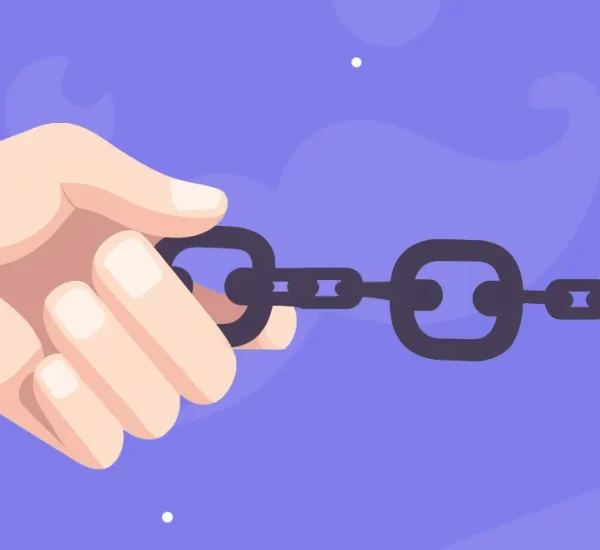Are you interested in how WordPress tags affect your website? You’ve found the correct place! This article aims to shed light on the characteristics of WordPress tags, how they differ from categories, and how they affect SEO. In addition, we’ll discuss whether tags are still useful in 2023. So, lets get to it!
In this article….
- What are WordPress tags?
- What’s the difference between tags and categories?
- How to use WordPress tags
- How to add tags in WordPress
- How to effectively tag in WordPress
- How to manage WordPress tags
- Do WordPress tags help or harm your site’s SEO?
- Should you use tags in 2023?
- Noindex WordPress tag pages
- Let’s wrap things up
What are WordPress tags?
Tags in WordPress can be thought of as handy little organisers, tidying your blog posts into particular topics. Much like bookmarks or sticky notes, they guide your readers through the various areas of your website. For example, on a food blog, tags like ‘vegan’, ‘desserts’, or ‘chocolate’ could help visitors explore related posts.
But here’s the interesting part: the usefulness of WordPress tags is often up for debate. Some believe they’re essential, while others, like me, hardly use them. They sometimes appear less important, especially when compared to the more robust WordPress categories. But wait a minute, tags and categories? Yes, you heard it right. It’s time we explored the differences between these two.
What’s the difference between tags and categories?
When it comes to keeping your content orderly, WordPress provides two main options: categories and tags. Although they might appear quite alike, they each have distinct roles in helping both your readers and search engines comprehend your content.
Think of categories as your book’s chapters, offering a wide, general perspective of the encompassed content. They’re built hierarchically, allowing for the possibility of having smaller subcategories nestled within larger ones. Consider a travel blog, for instance. You might use broad categories like ‘Destinations’, ‘Travel Tips’, or ‘Cuisine’, under which you could further breakdown into more specific subcategories such as ‘Europe’, ‘Budgeting’, or ‘Street Food’, respectively.
On the flip side, tags are akin to the index found at the end of a book. They pinpoint precise aspects within your articles and are generally used to describe your post in finer detail. If we circle back to our travel blog analogy, tags could include ‘Amsterdam’, ‘Backpacking’, ‘Italian Cuisine’, and so on. They’re non-hierarchical and are totally optional to employ.
While categories offer a broader organisation of your content, tags drill down into the specifics, connecting similar content across different categories. Understanding how these two differ can aid you in managing your content more effectively. However, whether or not tags enhance your SEO efforts is a topic up for debate.
How to use WordPress tags
Using WordPress tags is more of a skill than a simple task. Although they’re optional, when employed thoughtfully, they could potentially refine the navigation of your site. Let’s take a look at some good practices:
- Keep things relevant: It might seem like a no-brainer, but it’s important that each tag you use closely aligns with the content of your post. Throwing in irrelevant tags could potentially confuse your readers and send mixed signals to search engine bots.
- Be specific, but not too specific: The tags you choose should be specific yet flexible enough to cover more than just one post. For instance, if you run a travel blog, ‘European Cuisine’ could be a handy tag to use across various posts, whereas ‘Dinner at Luigi’s Pizzeria in Rome’ might just be a touch too detailed.
- Don’t overdo it: Remember, this isn’t Instagram, and WordPress tags aren’t hashtags. Overloading your posts with tags can end up doing more harm than good. While there’s no strict rule on tag quantity, aiming for around 5-10 per post is a sensible approach. More than that could potentially overwhelm your readers and give off a spammy vibe to search engines. So, be selective and choose your tags wisely.
- Consistency is key: Keep your tagging consistent. If you use ‘Hiking’ on one post and ‘Trekking’ on another, choose one term and use it consistently.
Armed with these pointers, we can now tackle the practical side: how to apply tags in WordPress.
How to add tags in WordPress
Adding tags in WordPress? It’s a piece of cake, really! Let me guide you through the steps:
- Write your post: Draft your article in the way you usually do. When you feel the need to introduce tags, locate the ‘Tags’ section, which is situated on the right-hand side of the WordPress editor.
- Add your tags: In the ‘Tags’ field, input your tags, remember to separate each one with a comma. It’s crucial to remember that these tags should be closely tied to your post’s content and adhere to the best practices we discussed earlier.
- Click ‘Add’: Once you’ve typed out each tag, hit the ‘Enter’ key or click ‘Add’. Your tags will then materialise under the box.
- Publish or update your post: When you’re content with your tags, be sure to click ‘Publish’ (or ‘Update’ if you’re attaching tags to an existing post).
And there you have it! You’ve successfully added tags to your WordPress post.
How to effectively tag in WordPress
So, you’ve decided to embrace the tag life on your WordPress site? Ok! However, it’s crucial to strike the right balance between using tags to provide relevant metadata for your posts and avoiding an unnecessary barrage of tags (also known as tag spamming). Allow me to share some tips to help improve your WordPress tagging game:
- Plan Your Tags: Before you jump in, grab a cup of coffee, sit back, and map out your tags. Think about tags that could apply to various posts, not just one-offs. Consistency is your friend here, and having a clear strategy will ensure your tags are relevant, useful, and not just random words tossed around.
- Use long-tail keywords: Consider making your tags into long-tail keywords, which are very specific phrases that people might use when they’re looking for detailed content. For example, “gluten-free baking” will get you further than just “baking.” But remember not to get too specific, or your tag may end up being a loner, applicable to no other posts.
- Review and revise: Just like spring cleaning, periodically reviewing your tagging strategy is a must. If a tag isn’t doing its job (that is, helping users find their way around your content), don’t be shy about refining or replacing it.
- Avoid category duplication: Tags aren’t just mini-categories, so don’t use them to duplicate your category structure. They should add extra nuance, not just repeat what’s already there.
- Noindex your tag archive pages: For those of you who are a bit SEO-savvy, you might want to consider ‘noindexing’ your tag archive pages. This means telling the search engines not to consider these pages when they’re crawling your site. Don’t worry if this sounds a bit technical, we’re going to delve into this topic in more detail later on.
Remember, tagging in WordPress isn’t a hard science, and there’s room for flexibility and creativity. So let’s move on to the next part of our tag journey: managing your WordPress tags.
How to manage WordPress tags
Once you’ve started the practice of using tags, it becomes essential to manage them properly to prevent any redundancy or disorder. Here’s your guide on how to do just that:
- Edit in Bulk: WordPress generously provides options for managing multiple tags at one go. To do this, simply head to ‘Posts’ and then ‘Tags’ on your WordPress dashboard. From there, you’ll find functions to delete, edit, or ‘quick edit’ a selection of tags together.
- Merge Similar Tags: Occasionally, you might discover you’ve created tags that are almost identical (like “travelling tips” and “travelling advice”). No worries, WordPress has a solution for that too! You can merge these similar tags. Just choose the tag you prefer to keep, and then enter the slug of the tag you want to merge into the ‘Slug’ field.
- Delete Unnecessary Tags: As time goes on, some tags might become outdated or irrelevant. It’s a good practice to regularly tidy up and remove these unused tags to keep your website organised and your tagging strategy in top shape.
Taking the time to manage your tags efficiently is key to maintaining your site’s structure and ensuring your SEO efforts remain effective.
Do WordPress tags help or harm your site’s SEO?
The question of how WordPress tags affect your site’s SEO performance is one that often stirs up discussions. On one side of the argument, tags can enhance the user experience by guiding visitors through your site and pointing out similar content. This might boost the amount of time visitors spend browsing and cut down on quick exits, sending favourable signals to search engine algorithms.
On the flip side, if tags are used haphazardly, they can unintentionally damage your SEO. Let’s say, for instance, that you have a multitude of posts each with its own unique tag, this leads to a situation known as ‘tag dilution’. It’s where each tag archive page contains just one or two posts. This can create pages with ‘thin content’, which are often considered of low quality by search engines.
Furthermore, using many similar tags can cause keyword cannibalisation. This happens when several pages on your site are fighting for the same keywords, which can confuse search engines and possibly knock down your ranking for those keywords.
It’s important to remember that tags aren’t a necessity. If used thoughtfully and managed well, they might give your SEO a small boost. However, if they’re implemented poorly or managed ineffectively, they could do more harm than good to your SEO performance.
Should you use tags in 2023?
The choice to use tags in 2023 boils down to your specific website needs and content strategy. When harnessed smartly, tags can improve site navigation and promote content discoverability. They group similar content and offer an extra layer of context to your posts, ultimately enriching your user’s journey.
However, don’t forget the potential SEO landmines. If you opt for tag usage, it’s vital to do so properly. Steer clear of tag dilution and keyword cannibalisation by restraining the number of tags you use and ensuring that each tag covers a broad topic relevant to multiple posts.
No matter what year it is, the fundamental rule remains: Tags ought to benefit your visitors and boost your content strategy. If they’re not ticking these boxes, it could be worth rethinking their application. As always, staying updated with the latest SEO best practices is crucial, given their tendency to evolve over time.
Noindex WordPress tag pages
Did you know that every tag you make in WordPress conjures up a separate page? Yes, it does, and these pages are often content-starved, rendering them low in value to search engines. You might consider not having these tag archive pages indexed by search engines to prevent possible SEO hitches such as thin content, tag dilution or keyword cannibalisation.
Different paths lead to noindexing WordPress tag pages, but one of the most straightforward involves an SEO plugin like Yoast or All in One SEO (AIOSEO).
Here’s how you can do it:
With Yoast:
- Locate and select ‘Yoast SEO’ on your WordPress sidebar.
- Click on ‘Settings’.
- Scroll down until you find the ‘Categories & tags’ segment, then select ‘Tags’
- Switch the ‘Show tags in search results’ toggle to ‘Off’.
With AIOSEO:
- Locate and select ‘All in One SEO’ on your WordPress sidebar.
- Click ‘Search Appearance’.
- Select the ‘Taxonomies’ tab.
- Scroll down to the ‘Tags’ section.
- Switch the ‘Show in Search Results’ setting to ‘No’ then click ‘Save Changes’.
After you’ve made these changes, it’s important to clear your site’s cache (if you use a caching plugin) to make sure your new settings are active.
Let’s wrap things up
As we close the chapter on our in-depth analysis of WordPress tags, it’s important to underline one thing: each decision you make for your website should be tailored to your specific requirements and goals.
Allow me to share a slice of my personal experience. I’ve seen tags serve a useful purpose in some previous blogs. However, when it comes to Blog Chap, I’ve consciously decided not to use them. Why, you ask? Over time, I’ve observed that as websites evolve, offering advanced search features and efficient indexing, the traditional role of tags have taken a back seat. Today, in many cases, tags may just add to your workload rather than streamline site navigation.
That said, it’s important not to dismiss tags completely. In certain situations, when used strategically, they can contribute to a more user-friendly site navigation. The secret lies in understanding their potential, and more importantly, their limitations with regards to your site content.
The conversation about tags and their influence on SEO certainly merits attention. It’s essential to think through all the ramifications. We’ve touched on the ‘noindex’ feature as a way to address possible SEO concerns, but it’s worth noting this isn’t a one-size-fits-all cure.
When all’s said and done, the organisation and navigational flow of your website should prioritise your audience’s needs and your content aspirations. It’s my hope that this discussion has shed some light on whether or not tags align with your website’s needs and objectives :).




